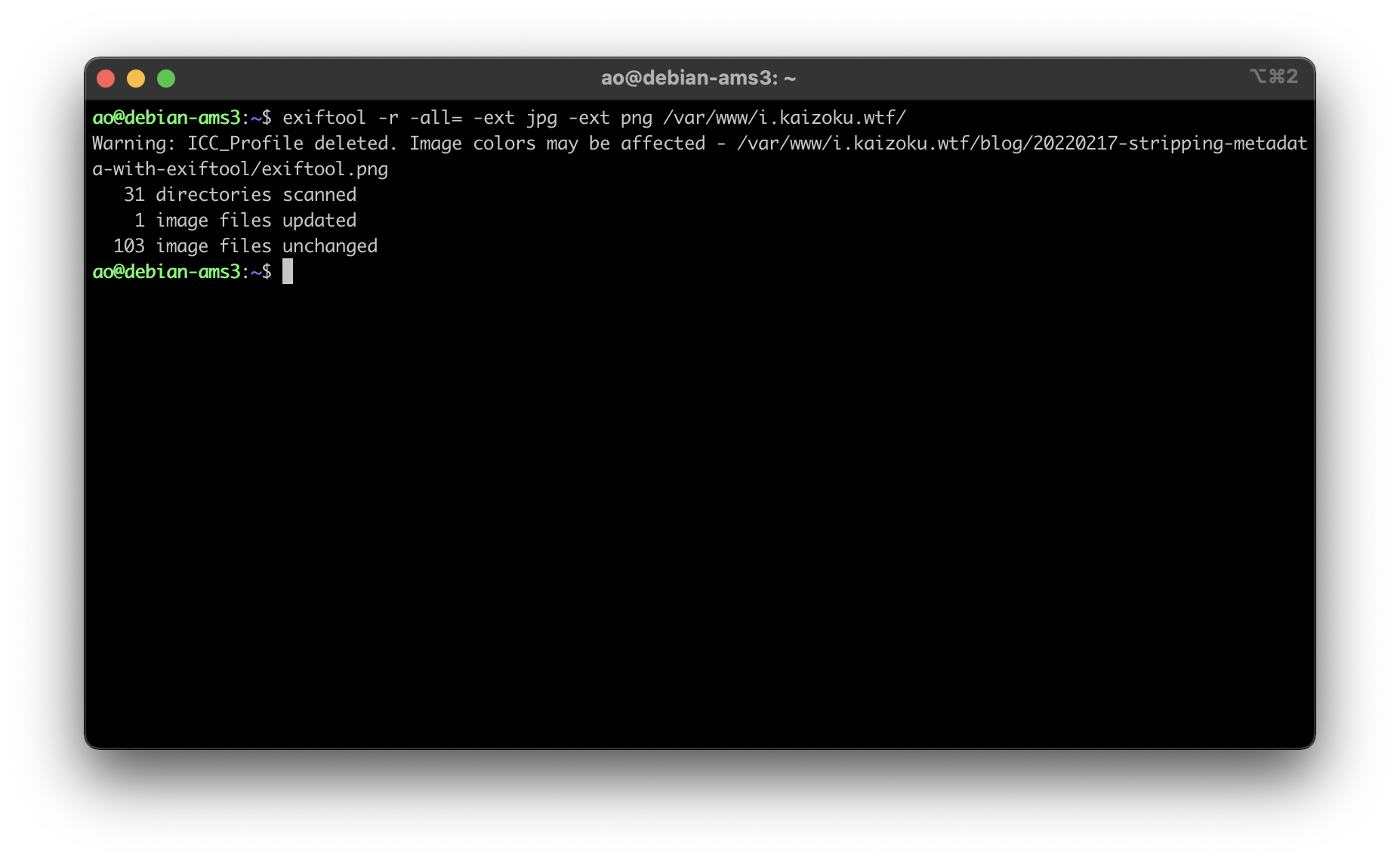diff options
Diffstat (limited to 'content/blog/2022-02-17-exiftool.md')
| -rw-r--r-- | content/blog/2022-02-17-exiftool.md | 67 |
1 files changed, 67 insertions, 0 deletions
diff --git a/content/blog/2022-02-17-exiftool.md b/content/blog/2022-02-17-exiftool.md new file mode 100644 index 0000000..9948b2e --- /dev/null +++ b/content/blog/2022-02-17-exiftool.md @@ -0,0 +1,67 @@ ++++ +date = 2022-02-17 +title = "Stripping Image Metadata with exiftool" +description = "A simple guide to remove exif data with exiftool." ++++ + +## Why Strip Metadata? + +Okay, so you want to strip metadata from your photos. Perhaps you take +pictures of very rare birds, and the location metadata is a gold mine +for poachers, or perhaps you're just privacy-oriented like me and +prefer to strip metadata from publicly-available images. + +There are various components of image metadata that you may want to +delete before releasing a photo to the public. Here's an incomplete +list of things I could easily see just by inspecting a photo on my +laptop: + +- Location (Latitude & Longitude) +- Dimensions +- Device Make & Model +- Color Space +- Color Profile +- Focal Length +- Alpha Channel +- Red Eye +- Metering Mode +- F Number + +Regardless of your reasoning, I'm going to explain how I used the +`exiftool` package in Linux to automatically strip metadata +from all images in a directory (+ subdirectories). + +## Installing `exiftool` + +First things first: we need to install the tool. I'm running Debian 11 +on my server (Ubuntu will work the same), so the command is as simple +as: + +```sh +sudo apt install exiftool +``` + +There are different tools that can accomplish the same thing across +distributions, but I really only care to test out this one package. + +## Recursively Strip Data + +I actually use this tool extensively to strip any photos uploaded to the +website that serves all the images for my blog +(`img.cleberg.net`). + +The following command is incredibly useful and can be modified to +include any image extensions that `exiftool` supports: + +```sh +exiftool -r -all= -ext jpg -ext png /path/to/directory/ +``` + +See below for the results of my most recent usage of +`exiftool` after I uploaded the image for this blog post. You +can see that the command will let you know how many directories were +scanned, how many images were updated, and how many images were +unchanged. + + |
